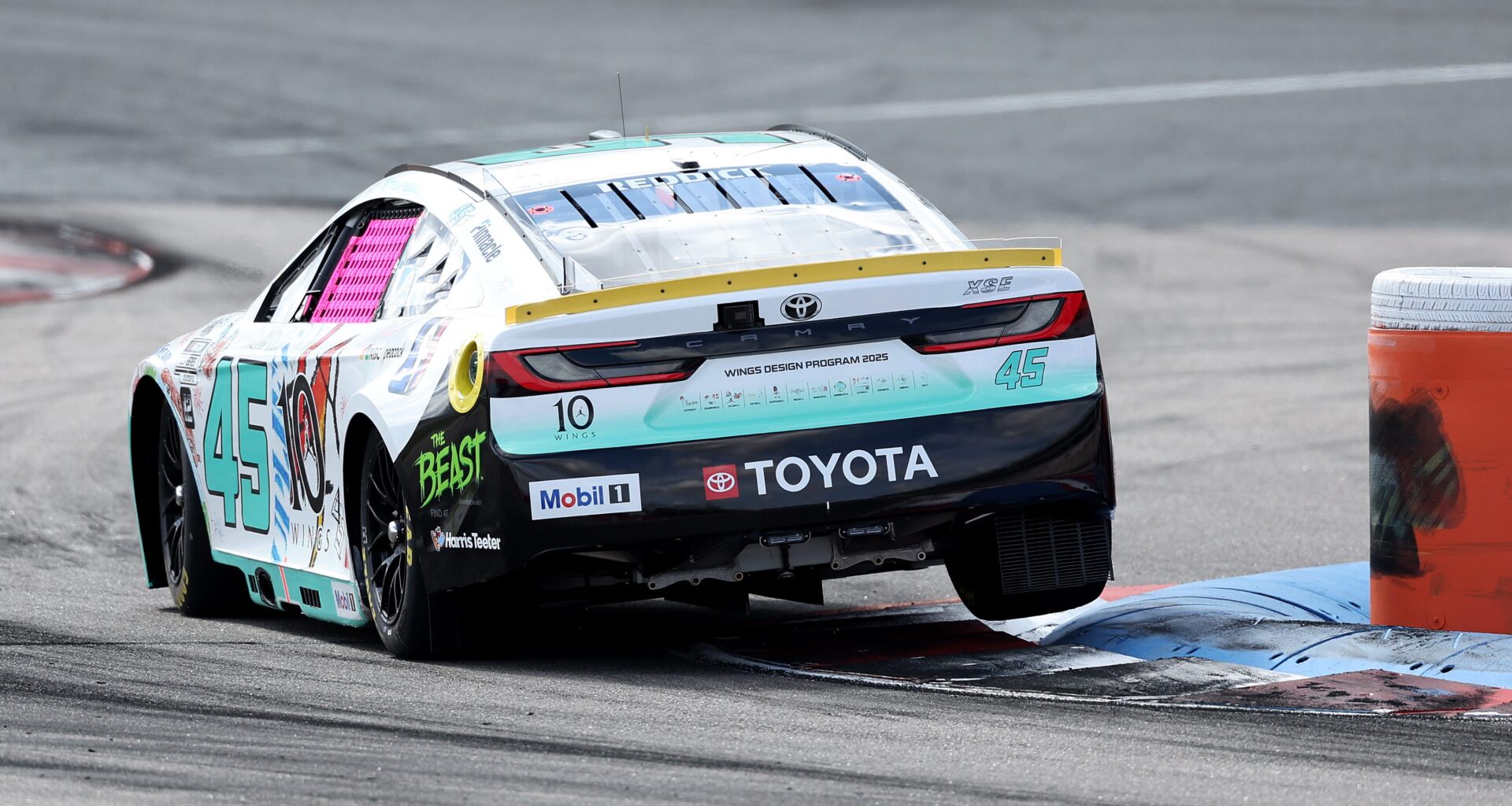CONCORD, N.C. — NASCAR made a significant change for the playoff weekend at the Charlotte Motor Speedway Roval by adding tire packs to two turns. This move is one that many drivers welcome as they prepare for a chaotic elimination race.
In their eyes, adding these tire packs takes judgement calls out of the hands of NASCAR Race Control.
“I love it,” Chris Buescher told FanBuzz ahead of practice and qualifying. “Physical track limits are always the key in my mind. We try over and over to make curbs that are too aggressive. In theory, it would make you stay off of it, but it doesn’t matter. There’s still too much speed there that you just have to endure as a driver.
And here is a look from yesterday’s track walk of the tire pack in turn going from infield back to the oval. According to truck teams I talked to, they learned of this earlier this week. @NASCARONFOX pic.twitter.com/LYOGLYvQv6
— Bob Pockrass (@bobpockrass) October 3, 2025
“We try to get away from that so that we don’t have these terrible impacts. It becomes a camera policing situation where you can run across it, but you’re policing a matter of a quarter-inch plus or minus. I know NASCAR doesn’t want to be put in that box, and we don’t want to be in that when we’re following a car.”
The impacts Buescher mentioned occur when the drivers go over the 4-inch turtles located throughout the road course. The drivers know that the best way to gain speed each lap is to go over these turtles instead of around them.
The problem for many drivers is that they launch the cars into the air. These vehicles then bottom out as they crash back onto the racing surface.
Photo credit: Getty Images
“When we hit — especially that final chicane because there was so much speed there if you clobbered it the right way — but I won’t lie, especially at 43 years old, it hurt,” AJ Allmendinger said. “Every lap, you just go in there, it was kind of almost like, ‘Oh God, here we go again,’ but you had to do it.”
Allmendinger, much like Buescher, appreciates that NASCAR put the tire pack in the final chicane. This move better protects the bodies and brains of the drivers, and it ensures that they won’t fall victim to ticky-tacky penalties.
“You can’t cut it as much with the bundle that they put,” Shane van Gisbergen said. “I think that’s a pretty good resolution they’ve come up with. It stops the question of cutting too much, but also, it’s quite violent on the car if you abuse it.
“I think it’s a pretty good thing they’ve done there. But, yeah, you still have to be precise here. It’s a hard track to get things right, but you can grab the car by the scruff of the neck, too, and send it pretty hard.”
Of course, safety is not the only factor teams and drivers are examining as they prepare for an elimination race at the Charlotte Roval. They also have some questions about the potential for dive bombs.
Turn 7, the new hairpin that NASCAR and SMI added last season, became the site of chaos. Drivers tried to aggressively take the inside line, which sent competitors spinning.
This still occurred in this season’s Truck Series race after NASCAR installed the tire pack, but some Cup drivers indicated that the tire packs could make these divebombs less inviting on Sunday afternoon. Although they still expect some contact as the race progresses.
“I think in in the race last year, drivers and cars were really cutting that corner quite a bit,” pole-winner Tyler Reddick said. “So, it keeps us more on the racetrack, I think with how much this tire wears away, keeping us off the paint over there is probably a good thing.
“I guess on the front chicane here, in the past, you’re able to really jump over that if you needed to, and that’s kind of taken that away. We kind of saw it, I think Kyle Busch made contact with it. A couple others did, and it didn’t destroy their car, it didn’t go flying.
“So, I think in the race – the intent of it was to keep us more on the racetrack, but it’ll be interesting to see when we’re two-by-two and we’ve got to work together to kind of get through a corner. We’re going to have less room, so, I expect more contact.”


